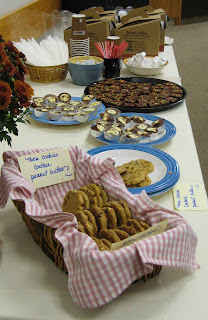
Is anyone else out there both a preservationist and a political junkie? If so, during this last stretch of the election season, you might be wondering about the intersection of historic preservation and politics. Historic preservation doesn’t exactly rank high on most candidates’ lists of priorities, and in an election dominated by issues related to the economy, health care, foreign policy, and energy, I would be shocked to hear either of the presidential candidates utter the words “historic preservation.” Still, since preservation does tie into broader issues, particularly economic and energy issues, it’s certainly relevant to wonder what the impact of the races to be decided in just a few weeks will be on historic preservation.
There are folks out there who spend their time working to advance preservation-related public policies, and this seems like a great time to let you know what they're up to. As a graduate student, I was an intern at Preservation Action, the nation’s grassroots lobbying organization for historic preservation at the federal level. PA has an impressive track record of effective work on behalf of historic preservation, advocating on behalf of the federal preservation program, the federal rehabilitation tax credits, and national programs like Save America’s Treasures and Preserve America. They have been instrumental in building the Historic Preservation Caucus, a bipartisan coalition of Congresspeople who pledge to work in support of the “the preservation and thoughtful economic development of historic places.” Seven Congresspeople from New York State, including Louise Slaughter, are members of this caucus.
As a grassroots network, PA is based on the support and participation of preservation advocates working at the local level throughout the country. Our region is not well represented in their membership rolls (I may still be the only Rochester-area member!); I encourage you to join and support this great cause. While it may seem like federal-level legislation and policy has little impact on what we do at the local level, the truth is, decisions made in Washington do impact us every day. I know I don’t have time to be actively involved in federal issues day to day, but it’s nice to know that Preservation Action is there to fill that role on our behalf.
The National Trust for Historic Preservation also takes an increasingly active role in advocating for policies that promote historic preservation and sensible development. In addition to its own advocacy work, the Trust’s Public Policy Department offers resources that can help local advocates make the case for appropriate preservation policies in their own communities. Check out their website for a variety of useful tools.
At the state level, the Preservation League of New York State coordinates a statewide coalition of preservationists who seek to advance preservation policies, with a particular focus in recent years on creating a meaningful state tax incentive for historic preservation. The specific political framework in our state (not to mention the current fiscal situation) makes this a challenging undertaking, but the colleagues across the state continue to make our case that preservation is a sensible and necessary investment in the future of our communities.
At The Landmark Society, our advocacy work also includes educating our local candidates about preservation and educating our members and friends about those candidates’ positions. Each fall, our Advocacy Task Force prepares a questionnaire to ask candidates for local, state and federal office in Monroe County their views on historic preservation and related issues. We are now collecting replies from the candidates and will have those up on our website next week; watch this space for more! We see this project as a great opportunity to let our candidates know what issues are most important to us, and to give our members and friends information that will help them evaluate how the candidates would approach local issues pertaining to revitalization, sprawl, and sustainable development.
While we did not send our questionnaire, which focused on relevant state and local issues, to the presidential candidates, it is interesting to wonder where they stand on historic preservation. I came across a blog post recently that posed the question of how each candidate would affect the field of historic preservation. Nellie Longsworth, past president of Preservation Action, used to say that preservation was not a Democratic or a Republican issue; there are supporters on both sides of the aisle and there have been leaders from both sides who have advanced distinctly pro-preservation policies.
After all, historic preservation ties into issues that candidates on both sides hold dear: it’s about strengthening local economies and creating local jobs, revitalizing historic downtowns and neighborhoods, conserving a unique sense of place, protecting the environment, and protecting and promoting the places that have contributed to our national character over the generations. We won't hear the presidential candidates address historic preservation specifically, but perhaps as we listen to them talk about bigger economic and environmental issues, we can make some inferences as to what type of leadership they would provide on the issues that impact our communities and our historic resources.
By Katie Eggers Comeau, Advocacy Coordinator











